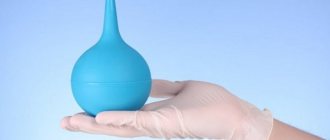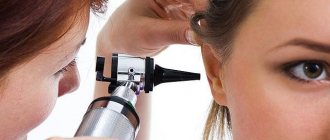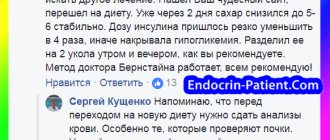03/12/2020 Category: Frequently asked questions Author: Elena Matiko
- 1 Possible complications
- 2 How to give injections in the buttocks for adults
- 3 Important points - which injections you can’t do yourself
- 4 Technique for performing an injection in the buttock
- 5 Preparation for the procedure: basic recommendations and rules 5.1 Preparation of materials for injection
- 5.2 Site preparation
- 5.3 What position should the patient be in before the injection?
Possible complications
Insufficient sterilization and other improper practices increase the risk of complications. In the case of independent treatment, which, in itself, is not very convenient, some errors are possible.
They often lead to problems such as:
- hematoma - a bruise caused by hemorrhage of vessels damaged by a needle;
- a purulent process if bacteria enter a poorly disinfected wound;
- allergic irritation in the form of rash, redness, and sometimes itching;
- the lump is an infiltrate, since an accumulation of medicine forms in the subcutaneous layer.
What can be done in these cases? These symptoms can be treated with the help of pharmacological drugs for resorption, as well as folk recipes.
Recommendations for self-injections are quite simple, but can help you avoid making serious mistakes during treatment:
- You need to give yourself an injection while standing in front of a mirror; a comfortable position is on your side;
- before the injection, you can draw an iodine tincture on the upper, outer square of the gluteal muscle;
- it is advisable not to insert the needle completely, but to leave ¼ of its length above the surface of the skin - this way there is less chance of roughly piercing the muscle tissue;
- when the injection has already been made, the skin at the puncture site needs to be massaged for a couple of minutes with cotton wool soaked in alcohol;
- a disposable syringe is used once, to avoid infection, it is better to choose a foreign-made instrument, since their needle is much thinner and sharper;
- two-component injectors are not intended for independent use;
- There is no need to give injections in the same place, otherwise you will not be able to avoid pain and long healing.
You can quickly learn how to properly give injections in the buttock at home, especially if you watch a special video. It will be enough to carry out this procedure 2-3 times, after which confidence and accuracy will appear, because there is nothing complicated about it. But there is an opportunity to use this knowledge when you need help for your loved ones or yourself.
ALLERGY. Treatment of allergies without drugs!
Bumps after injections. What to do?
After an inept procedure, a lump from the injection may remain. Often, even after properly performed manipulation, a lump may remain on the buttock. This complication can occur if the needle is too short, then the drug remains under the skin and does not dissolve.
The patient is not relaxed, and the medicine is administered too quickly, which will also leave a small lump. It’s worse if the needle gets into the vessel and blood comes out of it. A bruise forms inside, which forms a compaction.
Infection is considered dangerous if sanitary rules are violated. In this case, medical assistance will be required.
The remaining cases are not considered dangerous. They may go away on their own within a week. If the lump does not resolve, then therapy, including folk therapy, will help.
The most famous way to get rid of a lump is an iodine grid, which must be drawn twice a day. An excellent remedy is this ointment:
- Vishnevsky ointment;
- heparin ointment;
- troxevasin;
- creams with leech extract.
The ointment should be applied as a compress for 3 hours for two weeks. If improvement does not occur, then you should consult a doctor, especially with a strong increase in temperature. A complication threatens sepsis, so don’t let things take their course.
How to give injections in the buttock for adults
In general, the technique for performing this therapeutic action in adults is not much different from injections for children. How to give injections into the buttocks of adults so that the drug reaches its intended destination, and at the same time the procedure is minimally painful?
Of course, there are some peculiarities and nuances if treatment is necessary for an adult.
advertising is not displayed
After the preparatory stage, which consists of hygienic cleansing of hands, sterilization of the ampoule, and taking the medicine, you should decide on the injection point. It must be indicated in advance. Why is accuracy so important? The fact is that in addition to pain, there are other unpleasant consequences of incorrect administration of the injection solution:
- muscle atrophy;
- loss of sensation in the thigh;
- the needle can touch the sciatic nerve - this is the most serious damage that can result in impaired motor function.
Only in urgent cases, injections in the buttock area are given in a standing position; it is advisable for the patient to take a lying position on his side.
You should pay attention to lumps that have formed after previous procedures. It is strictly forbidden to inject into these seals, and it’s not even a matter of severe pain - the medicine simply will not be able to spread normally throughout the body
- If in children the injection is given into a skin fold, then in the case of adult patients, the skin is, on the contrary, stretched.
- The piston should be pulled back smoothly and slowly. The needle is inserted and pulled out perpendicular to the surface of the skin.
- After the procedure, the patient does not need to immediately jump out of bed. In order for the drug to dissolve safely, you should lie down for 10-15 minutes.
Probably, it is not worth saying that all actions should be carried out with sterility, and the patient should be warned that pain appears only when the buttock is tense.
Why is accuracy so important? The fact is that in addition to pain, there are other unpleasant consequences, for example, muscle atrophy.
What might you need?
To give the correct injection in the buttock without pain, you should have on hand:
- Ampoule with the product;
- Cotton wool;
- Antiseptic;
- Gloves in your size;
- Syringe;
- Alcohol-containing product;
- Blade.
When an intramuscular injection into the thigh was performed incorrectly, the following unpleasant consequences may occur:
- Cones. Appear if the drug is not absorbed. If the lumps have not disappeared two months after the injection, you will need to contact your doctor.
- Bruises. Bruises appear when a vessel is hit during injection.
- Numbness. If the numbness of the buttocks does not go away, then you need to call a doctor.
- An abscess is the most dangerous type of complication, the treatment of which must be carried out under the supervision of a doctor.
- Tissue compaction.
- Inflammation. Inflammatory processes also need to be treated under medical supervision.
Important points - which injections you can’t do yourself
There are injections that are best done in medical institutions under the supervision of specialists, as they can have serious consequences.
How to properly fold the skin to give an injection
During the course of treatment, in order to avoid pain in the buttock, it is recommended to give injections into the buttocks one at a time. Ideally, it is better to seek help from medical professionals so as not to mix incompatible drugs in the body.
When carrying out some injection courses, you need to take breaks between injections. In this way, the body will be able to avoid overloading the body in the fight against the disease.
If the drug in the ampoule is in dry form, it must first be dissolved in injection water. To do this, injectable water is injected into the ampoule with a syringe, the drug is shaken until completely dissolved, then sucked back into the syringe. After this, the needle must be replaced with a new one.
Antipsychotic drugs should be administered under the supervision of a healthcare professional to monitor the patient's response.
Drugs with narcotic effects are administered to patients only in hospitals due to the increased danger. The body's reaction can be very different. Ampoules are given away after injections.
Traditional treatment for cones
If the injection is unsuccessful, then select an alternative treatment that will help cope with the complication.
An effective remedy is a compress with propolis tincture, which is sold at the pharmacy.
How to apply a compress:
- Lubricate the skin around the bump with baby cream, preferably a thick layer;
- Moisten a cotton pad with propolis tincture and place it on the sore spot;
- Secure with adhesive tape, hold for 3 hours;
- The course of treatment is 10 days.
Old seals will dissolve if you put a cabbage leaf smeared with honey on them. Beat a cabbage leaf with a hammer, coat it with a layer of honey, apply the “honey” side to the pine cone, secure, and leave overnight. The course is a week.
Aloe is an effective remedy against seals:
- Pick 1 aloe leaf and put it in the refrigerator for a day.
- After a day, prepare a paste from it.
- Place on the cone, cover with plastic, secure, cover with a warm scarf.
- Leave it on all night.
- Treatment is carried out until the lump is removed, approximately 2 weeks.
In the same way, you can apply pickles and banana peels with the inside. After the third treatment, the hardening usually disappears.
A crushed sheet of siren, tied daily for 3 hours, will get rid of the seal within a week. At night you need to apply 3-4 crumpled sheets at once.
Often the bumps are very itchy and interfere with sleep. There are many medical techniques and folk methods.
- Cottage cheese cake. Warm some cottage cheese and apply it to the itching area for the whole night.
- Potato. Wash the tuber, cut off a circle, tie it to the itching area. Change the circles every 3 hours.
- Onion. Cut a ring from the onion and tie it to the seal for 2-3 hours.
- Mash the crumb of rye bread, mix with salt, tie to the itchy area.
Usually the itching goes away on its own within 3 months.
Technique for performing an injection in the buttock
After thorough hand hygiene, proceed to draw the medicinal substance into the syringe:
- Unpack the syringe from the plunger side.
- Place the needle on the syringe and release all the air from it.
- Place the prepared instrument on a sterile napkin.
- Take an ampoule with the medicine, check the shelf life of the medication and its compliance with the doctor’s prescription. Shake the bottle a little so that the medicine flows down.
- File the neck of the ampoule with a nail file.
- Wipe the cervix with a cotton swab soaked in alcohol or an antiseptic wipe.
- Break off the top of the ampoule.
- Take the syringe, remove the cap from the needle, and carefully insert it into the container without touching the walls.
- Draw the medication into the syringe, gradually pulling back the plunger.
- Remove air bubbles: holding the syringe vertically with the needle up, gently press the plunger until the first drop of medicine appears at the tip of the needle.
- Disinfect the injection site with a swab soaked in alcohol.
- Firmly insert the needle to a depth of approximately ¾ of its length.
- Inject the medicine by slowly pressing on the plunger at a rate of approximately 1 ml/10 sec.
- Quickly pull out the needle, immediately pressing the injection site with an alcohol swab.
If the medication needs to be taken from a bottle with a rubber stopper, there are additional rules:
- remove the needle from the syringe, pierce the stopper with it;
- turn the bottle over, put the needle on the syringe with it;
- take the required amount of medicine;
- Leave the used needle in the cap of the bottle, and for injection, put a new one on the syringe.
Adviсe
Naturally, you want to carry out the procedure as gently as possible, without hurting the person. Under no circumstances act on the principle: “the sooner I administer the medicine, the sooner the painful sensations will end.” This is a misconception. The medicine must be administered as slowly as possible, then the process will pass without pain. The recommended rate of administration of medications is 1 ml/10 seconds.
If you have never given injections, practice at least on a pillow first. This will help fill your hand.
During intramuscular injection, do not insert the needle deeply, i.e. all the way to the coupling. If the needle accidentally breaks, it will be impossible to remove it yourself.
Preparing for the procedure: basic recommendations and rules
Before giving an injection, it is necessary to carry out a number of important manipulations.
Preparation of materials for injection
- Soap (it does not have to be antibacterial);
- Clean or disposable hand towel;
- A tray on which all the tools will be placed. At home, it is quite difficult to disinfect a large surface, such as a table, so you can work with a small tray (if you don’t have one, a regular plate will do). Wash its surface thoroughly with soap and additionally wipe with an antiseptic (these can be alcohol wipes, sold in every pharmacy, or cotton wool soaked in chlorhexidine or 70% alcohol).
- Gloves. At home, many people neglect gloves, but this is wrong. For the patient and the person giving the injection, they provide additional protection against infections.
- Syringes. For intramuscular injections, 5 ml syringes are used.
- Needles.
You cannot do without these tools if the medicine needs to be diluted before administration. The dry drug, sold in an ampoule with a rubber cap, is diluted as follows:
- the solvent is drawn into the syringe;
- the rubber cap is pierced with a needle and the solvent is poured into the ampoule;
- Without removing the needle, shake the ampoule so that the medicine is completely dissolved;
- the resulting solution is drawn back into the syringe.
After puncturing the rubber cap, the used needle should be thrown away as it is no longer sharp enough to inject.
Preparing the site
When choosing a location, it is better to give preference to a space where certain conditions will be met:
- the tray with tools should be located so that it can be easily reached;
- the area should be well lit.
What position should the patient be in before the injection?
There are no special requirements for this. The patient can lie or stand, as is convenient for him. The main thing is that the one who will give the injection does not experience any discomfort or restriction of movement during the procedure, and that all the necessary tools are easily accessible.
Preparatory stage
Before the first injection, you should purchase all the necessary attributes:
- syringes - specially designed for intramuscular injection, with a long needle and a volume of 2 to 5 cubes (cm3);
- medicine prescribed by the doctor - in solution or powder (requiring additional dilution);
- cotton pads, balls or sterile medical cotton wool;
- antiseptic solution - "Miramistin", "Chlorhexidine", special wipes or solutions for injections, in the worst case - vodka, alcohol cologne will do.
Rubbing alcohol is more difficult to obtain - it is sold in small bottles and requires a doctor's prescription.
How to give injections in the butt for children - step-by-step instructions. Video
Almost every mother has to give her baby injections on her own. To do this, you need to know how to give an injection in a child’s butt to avoid any complications.
Preparation of the workplace includes the following things:
- Ampoules with the drug prescribed by the attending physician in the recommended dosage.
- Antiseptic solution or alcohol.
- Sterile cotton wool.
- Syringes.
- Disposable needles.
Syringes for children are selected individually depending on the age and physiology of the baby. The needle should be small and not thick, but suitable for administering the drug. For children from 1 to 5 years old, a needle of 0.5x25 mm is recommended, for children from 6-9 years old - 0.6x30 mm.
Algorithm for the procedure:
- Before the injection, massage the baby's buttock to disperse the blood.
- The child needs to be distracted and calmed. It's good to have someone else who can do it.
- Wash your hands and wipe them with antiseptic.
- Prepare a tray with tools. Wipe instruments with antiseptic.
- Wash your hands and wipe them with antiseptic again.
- Wear gloves and handle them.
- Wipe the ampoule with sterile cotton wool.
- Unpack the syringe, put on the needle, draw the medicine into it, close the needle, remove it and throw it away. Place a new needle on the syringe.
- Determine the injection site. To do this, you need to conditionally divide the baby’s buttock into 4 parts and inject it into the upper right square.
- Wipe a wide area with one ball moistened with alcohol, then treat the injection site with another moistened ball.
- Keep the syringe perpendicular, level, without tilting. Insert the needle, but not all the way, so that 0.5 cm of the needle remains outside.
- Take your time to administer the medicine. Place the moistened cotton wool at the injection site and remove the needle.
- Collect waste material and throw it away. Afterwards, throw away the gloves.
- Wash the hands. Treat them with alcohol.
To correctly administer the solution for intramuscular injection, you need to perform the following sequential steps:
- The plate is disinfected with boiling water, and hands are washed with antibacterial soap;
- Tampons are formed from cotton wool, which need to be soaked in antiseptic. 5 pieces are enough;
- A closed syringe, cotton swabs, an ampoule with medicine or a jar with lyophilisate are placed on the plate;
- You need to wash your hands again, dry them on a towel and put on gloves;
- The ampoule is opened or the lyophilisate is diluted;
- All garbage remaining after preparing for the injection is thrown into a garbage bag;
- The package with the syringe is opened and the needle opens;
- The medicine is drawn into the syringe, then the needle is turned up and the air is released by pressing the piston. There should be a trickle;
- The patient's buttock is wiped with tampons soaked in antiseptic. It is necessary to disinfect a large area of skin, not just the injection site;
- Afterwards, you need to wipe the buttock with an antiseptic again, but now only the area where the needle was inserted;
- The needle is sharply inserted into the muscle at an angle perpendicular to the skin, but not all the way. There should be at least half a centimeter left on the surface;
- Under the pressure of the piston, the solution is gradually injected into the gluteal muscle;
- After quickly removing the needle, a swab soaked in antiseptic is applied to the wound.
Upon completion of the procedure, all unnecessary instruments are thrown away, and hands are thoroughly washed with soap.
Manipulation area
Anyone who injects medicine parenterally for the first time should learn that the procedure is performed in one correct area. Due to the lack of experience, you can cause severe injury to a person and the administration of the medicine can provoke many complications.
In order to find a place for parenteral injection, it is worth mentally dividing the buttock into 4 parts. If it’s hard to imagine in your mind, you can picture it as iodine. It is strictly forbidden to infuse the medicine into the lower parts and into the upper inner quadrant (it is located near the spine).
Obviously, the safest solution is the upper quadrant, which is located outside.
This is worth knowing so as not to get into the nerves of the sacral plexus, large vessels, and periosteum.
The drug is injected into muscle tissue, not into the fat layer, and the needle will not touch the bones.
Preparing the injection dose
When preparing a dose of the drug for injection into a muscle, you need to follow several basic instructions:
- Wash and dry your hands before handling injection equipment
- Do not use a used, unopened or damaged syringe
- Always stick to the recommended dosage
- Do not allow the needle to touch anything other than the ampoule (vial) of the drug.
- Consult a specialist if you have difficulty at any stage of the procedure.
The following is a general procedure for preparing an injection dose. Some medications require dilution beforehand, so do not disregard the advice of the medication manufacturer or your doctor.
The suggested steps for preparing an injection dose are only an example:
- Remove the cap from the medication bottle and wipe the rubber stopper with alcohol.
- Check the integrity of the individual syringe packaging. If it is open or damaged, throw away this syringe and get another one.
- Remove the cap from the syringe and hold it like a writing pen.
- Pull the piston towards you, drawing in air with the syringe (in a volume equal to a single dose of the drug used).
- Place the bottle of medicine on a flat surface, insert the needle into the center of the rubber stopper, and press the piston, pushing the collected air into the bottle.
- Without pushing the needle out of the stopper, turn the bottle upside down. Make sure that the tip of the needle remains immersed in the drug.
- Holding the bottle with the stopper down, pull the plunger towards you, filling the syringe with the required amount of medication.
- While holding the needle in the vial, check the syringe for air bubbles by lightly tapping it. Gently press the plunger to remove any trapped air.
- Check again that the dose of the drug in the syringe is correct and remove the needle from the bottle. (For example, the prescribed dose may differ from that recommended in the instructions for use of the medicine).
- Do not place the needle down or allow it to touch foreign objects until the injection is performed.
Selection of needle for intramuscular injection - caliber and length
First, you need to know that a syringe consists of three main elements:
- Needles : the part of the syringe that pierces the skin and penetrates the muscle (caliber and length will be discussed later)
- Cylinders : containers for measuring and containing medicinal solution
- Piston : element that controls the flow of the drug
The needle must be long enough to penetrate the muscle to the desired depth. The two main characteristics of a needle are gauge and length. The gauge corresponds to the diameter of the needle. The larger the gauge, the smaller the needle diameter. For intramuscular injections, 22-25 gauge needles are usually used.
The length of the needle is measured in millimeters (mm) and typically depends on the person's body type. However, the standard needle length for intramuscular injections ranges from 45-70 mm. Be sure to select the optimal gauge and length of needle for each injection site to prevent any pain that may result from improper needle insertion, tissue damage, or irritation.
Injectable preparations usually come in a kit with suitable needles. If in doubt, be sure to contact your healthcare provider to ensure that the gauge and length of the needle you are using is correct.
Complications after intramuscular injections
Often, if the injection rules are not followed, consequences arise that negatively affect the patient’s health. The most common complications are infiltrates, popularly referred to as “bumps”. They arise due to the rapid administration of medication (the most provoking drugs are antibiotics and some vitamins).
One of the dangerous complications is paralysis of the sciatic nerve (if a needle gets into it). During the manipulation, the patient experiences acute pain, so if such a symptom occurs, it is necessary to urgently stop administering the medication.
It should also be taken into account that the patient may experience an allergic reaction, anaphylactic shock or Quincke's edema due to intolerance to a certain drug. If there is redness of the face, neck, as well as swelling, rash and suffocation, you should urgently call an ambulance.
If you take into account all the rules of asepsis and antisepsis, as well as correctly perform the injection technique, then the manipulation will seem like a simple and easily performed procedure even at home. If you are far from medicine, this does not mean at all that you do not have the right to give your relative an injection, thereby helping him recover
How to give an injection in a child's buttock
If parents do not know how or are afraid to give an injection to a sick child, it is probably better to turn to a professional - a nurse. But we consider cases when certain events prevent the use of qualified medical assistance. Indeed, circumstances can be urgent, and then moms and dads will need to learn how to properly handle a syringe and know the sequence of important actions.
Children need an injection in the buttock after careful preparation:
For these purposes, a prescribed medicine, medical, sterile cotton wool made from natural, microscopic cellulose, several disposable three-component syringes should be prepared in the house - for children, an imported version with the sharpest and thinnest needle is chosen
There should also be pharmaceutical alcohol in the house. When preparing, it is important to wash your hands thoroughly - use soap with antibacterial properties. It is imperative that the medicinal ampoule is wiped, its top is broken off in advance and drawn into a syringe with the obligatory removal of bubbles. Drops of solution on the needle are removed with a sterile cloth. The buttock should be mentally divided into four parts, the upper, outer part is located on the side
The presence of mind and calmness of the parent determines the quick, accurate and even insertion of the needle, which ensures a minimum of painful sensations. Before insertion, the delicate baby skin should be massaged, after warming your hands. Try to distract your baby by talking, which will allow him to relax as much as possible. The entire area of the gluteal square should be wiped with alcohol. Before inserting the needle, the skin must be gathered into a fold, into which the needle must be inserted quickly and sharply - the angle in relation to the child’s body must be right. The needle is removed quickly, almost pulled out; even before removal, you need to apply cotton wool with alcohol to the wound.
Giving an injection, even to a beloved baby, is not scary, the main thing is not to be nervous - you need to understand that these actions are necessary and can help the child recover. And it’s worth it to learn how to give injections as well as a medical professional.
Injecting correctly: step-by-step instructions
- We wash our hands according to the rules. Hands must be washed three times during the procedure. The first time is before collecting the instruments, the second time is before the injection itself, and the third time is after it. To prevent germs from getting onto the surface of the patient’s skin, brushes should be soaped and washed off several times. When washing, each finger and wrist are thoroughly washed.
- The surface of the tray on which the instruments are supposed to be placed is treated with an antiseptic.
- We prepare five cotton balls and the same number of alcohol wipes in advance.
- We prepare the ampoule and syringe, but do not open them yet.
- The second time I wash my hands thoroughly.
- We put on gloves and be sure to treat their surface with an antiseptic.
- We take the ampoule with the medicine and also treat it with an antiseptic. This is an important procedure due to the fact that the storage conditions for ampoules with medications are far from sterile.
- Open the ampoule. Before opening, lightly tap the top of the ampoule with your finger to shake off the remaining solution. Using a napkin, in a specially marked place, break off its top in the direction away from you, and then place the ampoule on a tray. Often, a special file is required to open the ampoule. In this case, you should do this: before breaking, you must carefully file down the upper, narrowest part of the ampoule.
- We open the package with the syringe, observing the rules of sterility, according to which we make the tear from the side of the piston, without touching the needle.
- We insert the needle and, holding the base with your fingers, remove the cap, immerse it in the ampoule containing the drug. Smoothly pulling back the piston, we draw in the solution, then turn the syringe over with the needle up, release air bubbles, put the cap on the needle and place the syringe on the tray.
- We treat the patient’s buttock with an antiseptic or a napkin. Initially it should be a large area. During the second treatment, the direct injection site is used.
- Take the syringe as convenient as possible and insert the needle in one motion. It should be at right angles to the skin. Do not enter all the way. A small section of the needle, ½ cm to 1 cm, should remain outside.
- We slowly inject the medicine, strictly ensuring that the syringe and needles do not twitch. If administered quickly, the solution can corrode tissue, resulting in the formation of a bruise (hematoma) and painful lumps at the injection site, which take quite a long time to resolve.
- We take the last prepared napkin or cotton ball and apply it to the injection site. In one motion, pull out the needle and quickly apply pressure to the wound. There is no need to grind anything. Just press and hold.
- Tools that have been used must be disposed of.
- Upon completion of the procedure, wash your hands thoroughly again.
Pre-workout
Before learning how to give injections, additional training is simply necessary.
You will need a regular syringe and a piece of rubber. The syringe is filled with plain water.
On the rubber surface, select an area several centimeters wide. Then we insert the needle, holding the syringe directly to the rubber surface.
We pierce the rubber with a needle and slowly pour water through the syringe. Then the needle should be carefully removed, holding the needle rod with your finger.
What are the dangers of performing an injection in the buttock incorrectly?
Compliance with the technique and rules for intramuscular injections ensures the safety of the procedure. If they are violated, serious complications can arise. Among the most common:
- Infection. It manifests itself as pain, swelling, tissue compaction, and redness at the injection site. Develops when antiseptic rules are not followed.
- Hematoma. A bluish or purple bruise forms on the skin. Appears when the needle insertion technique is incorrect.
- Allergy. It manifests itself as a general feeling of discomfort, itching, and a rash at the injection site. It develops due to intolerance to the components of the drug, so you should only use medications prescribed by your doctor.
- Necrosis. The patient is concerned about pain, swelling of the tissue at the injection site, then ulcers, wounds, and bluish skin appear. This condition develops when the medicine gets under the skin rather than into the muscle.
- Damage to the sciatic nerve. One of the most dangerous complications that can cause impairment of a person’s motor activity. It manifests itself as pain in the buttock and throughout the leg, inability to move. Occurs when the injection site is chosen incorrectly.
- Infiltrate. A lump forms at the injection site, causing pain. This complication develops when the drug is constantly administered into the same anatomical site.
- Anaphylactic shock. This is a condition that threatens not only the health, but also the life of the patient. It manifests itself as suffocation, increasing shortness of breath, a feeling of lack of air, and loss of consciousness. In this case, you should immediately call an ambulance. Anaphylactic shock develops as a reaction to the administered drug, most often occurring with an allergy to antibiotics.
Only compliance with all the rules and subtleties of performing an injection in the buttock will make the procedure not only safe, but also have a positive therapeutic effect.
Possible consequences
Disinfection of hands and the site of the intended puncture is a mandatory measure that will protect the body from blood poisoning. The safety rules for intramuscular injections are not limited to this.
It is important to dispose of any instruments left after the procedure. It is recommended to break the needle and then cover it with a cap. Then all tools are disposed of so that children and animals cannot reach them in order to avoid sad consequences.
After administering the medicine intramuscularly, a lump may appear at the puncture site. It will not cause harm to the body, but it will cause pain, especially in a sitting position.
To prevent this from happening, it is recommended to massage the injured area immediately after removing the needle. Then the medicine will disperse throughout the body, and stagnation will not occur.
What complication can be expected:
- Infiltration or lump - such a formation can form at the site of intramuscular injection. This occurs due to the rapid administration of the drug into the buttock, so this process should be monitored carefully. To prevent the formation of lumps, you should not constantly inject only one buttock.
- Pay close attention to skin redness. It is quite painful, touching it causes discomfort, and the temperature rises, then you urgently need to see a surgeon. Symptoms indicate a post-injection abscess.
- The sciatic nerve may be affected. In the first seconds after inserting the needle into the buttock, a sharp pain occurs, localized in the back of the thigh, then the needle must be pulled out immediately. You can try the injection again after some time, determining the injection site.











